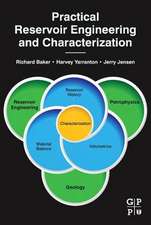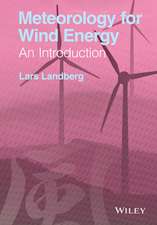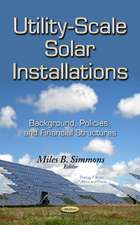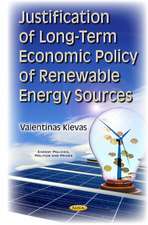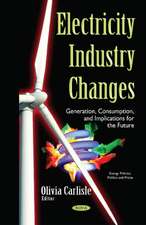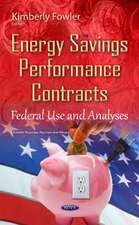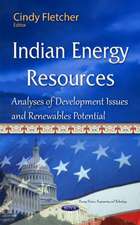Crude Oil Fouling: Deposit Characterization, Measurements, and Modeling
Editat de Francesco Coletti, Geoffrey Hewitten Limba Engleză Hardback – 9 dec 2014
Crude Oil Fouling is a must-have reference for every petroleum engineer’s library that gives the basic framework needed to analyze, model, and integrate the best fouling strategies and operations for crude oil systems.
- Defines the most critical variables and events that cause fouling
- Explains the consequences of fouling and its impact on operations, safety, and economics
- Provides the technical models available to better predict and eliminate the potential for fouling in any crude system
Preț: 652.18 lei
Preț vechi: 850.43 lei
-23% Nou
Puncte Express: 978
Preț estimativ în valută:
124.83€ • 135.64$ • 104.93£
124.83€ • 135.64$ • 104.93£
Carte tipărită la comandă
Livrare economică 14-28 aprilie
Preluare comenzi: 021 569.72.76
Specificații
ISBN-13: 9780128012567
ISBN-10: 0128012560
Pagini: 360
Ilustrații: 175 illustrations
Dimensiuni: 152 x 229 x 23 mm
Greutate: 0.72 kg
Editura: ELSEVIER SCIENCE
ISBN-10: 0128012560
Pagini: 360
Ilustrații: 175 illustrations
Dimensiuni: 152 x 229 x 23 mm
Greutate: 0.72 kg
Editura: ELSEVIER SCIENCE
Cuprins
List of Contributors
Preface ix
Nomenclature
1. Introduction
1.1 Crude Distillation Units in Oil Refineries
1.2 Impact of Fouling on Crude Distillation Units
1.3 Concluding Remarks
2. Basic Science of the Fouling Process
2.1 Fouling Mechanisms
2.2 Routes to Crude Oil Fouling Formation
2.3 Events in Crude Oil Fouling
2.4 Variables Affecting Fouling
2.5 Conclusions
3. Experimental Generation of Fouling Deposits
3.1 Small Scale, Accelerated Conditions: Microbomb Fouling Tests
3.2 Batch System: Stirred Cell at the University of Bath
3.3 Large-Scale Experiments in Flow Systems
4. Deposit Characterization and Measurements
4.1 Analysis of Field Fouling Deposits from Crude Heat Exchangers
4.2 Chemical Structure and Molecular Weight Characterization
4.3 Chemical Imaging of Deposited Foulants and Asphaltenes
4.4 Fluid Dynamic Gauging: Thickness and Strength Measurements
5. Modeling of Fouling from Molecular to Plant Scale
5.1 Review of Heat Exchanger Design Methodologies and Mathematical Models of Fouling
5.2 Thermodynamic and Molecular Modeling
5.3 Fundamental Transport Modeling
5.4 Industrial Scale High-Fidelity Modeling
6. Concluding Remarks
Appendix 1
References
Index
Preface ix
Nomenclature
1. Introduction
1.1 Crude Distillation Units in Oil Refineries
1.2 Impact of Fouling on Crude Distillation Units
1.3 Concluding Remarks
2. Basic Science of the Fouling Process
2.1 Fouling Mechanisms
2.2 Routes to Crude Oil Fouling Formation
2.3 Events in Crude Oil Fouling
2.4 Variables Affecting Fouling
2.5 Conclusions
3. Experimental Generation of Fouling Deposits
3.1 Small Scale, Accelerated Conditions: Microbomb Fouling Tests
3.2 Batch System: Stirred Cell at the University of Bath
3.3 Large-Scale Experiments in Flow Systems
4. Deposit Characterization and Measurements
4.1 Analysis of Field Fouling Deposits from Crude Heat Exchangers
4.2 Chemical Structure and Molecular Weight Characterization
4.3 Chemical Imaging of Deposited Foulants and Asphaltenes
4.4 Fluid Dynamic Gauging: Thickness and Strength Measurements
5. Modeling of Fouling from Molecular to Plant Scale
5.1 Review of Heat Exchanger Design Methodologies and Mathematical Models of Fouling
5.2 Thermodynamic and Molecular Modeling
5.3 Fundamental Transport Modeling
5.4 Industrial Scale High-Fidelity Modeling
6. Concluding Remarks
Appendix 1
References
Index



